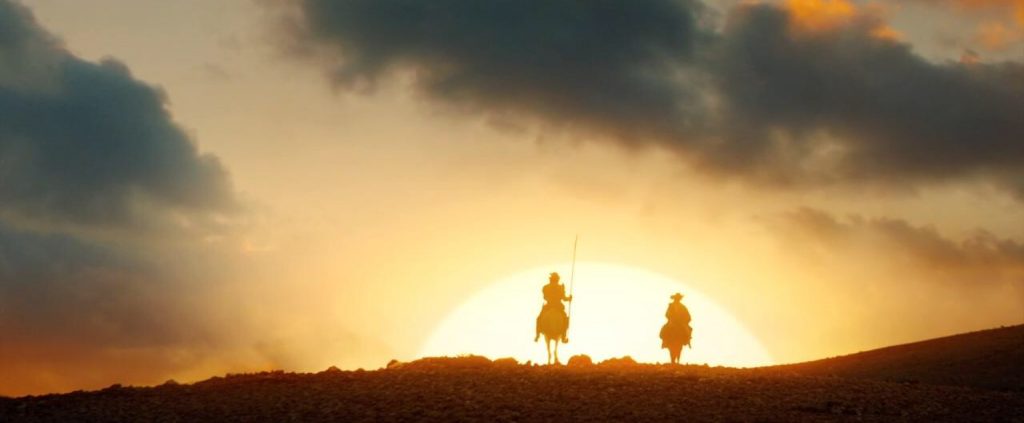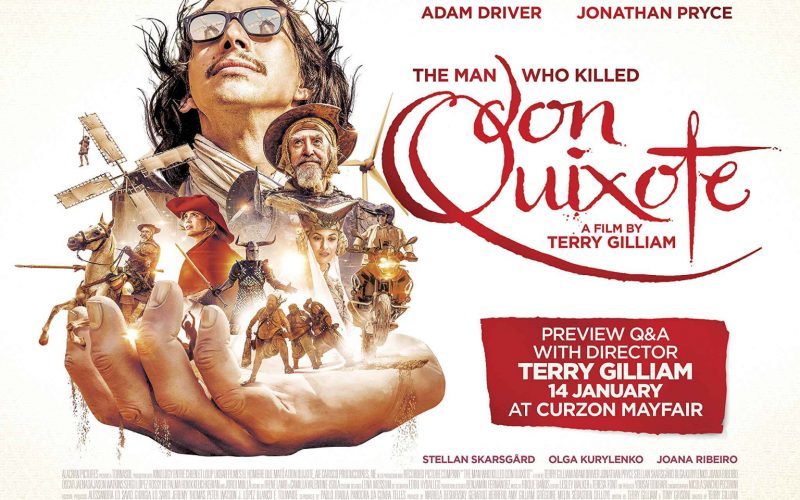The Man Who Killed Don Quixote (2018).
Somehow Terry Gilliam’s The Man Who Killed Don Quixote exists. Almost twenty years after the director’s catastrophic first attempt to make the film, which was brought down by an unwell leading man, scheduling difficulties, flash floods and a less than water-tight insurance policy, Don Quixote and Sancho Panzo are here and one of the most cursed projects in the history of cinema has been completed. But was it worth the wait, and is it even fair to ask that question?
The Man Who Killed Don Quixote stars Adam Driver as Toby, a filmmaker struggling to make a version of Don Quixote in rural Spain. Dissatisfied with his vision he comes across a student film of the same subject matter that he made years ago and goes in search of the local shoemaker who played Don Quixote. However, the old man who once played Quixote now actually believes that he is the fictional Man from La Mancha and lives his life embodying the famous knight-errant of Cervantes’ great novel. Toby also manages to track down a young woman called Angelica with whom he shared a brief flirtation at the time and who played a small part in his film which left her infected with dreams of stardom that did not come true. She has since been a model and an escort and her family have cast her out. Events then take an even more bizarre turn when, following a deadly encounter with local police, Toby is forced to go on the run, tagging along with Don Quixote and becoming, in the old man’s imagination, his squire, the famed Sancho Panza.
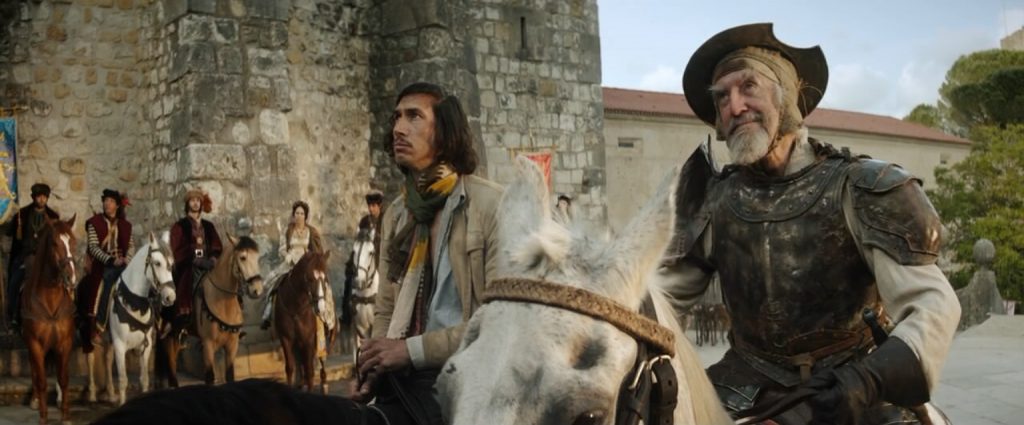
The version of The Man Who Killed Don Quixote that Gilliam has finally given us is quite different from the proposed film that was literally washed away all those years ago. That version would have involved time travel and, one imagines, a great deal more opulence than the paired down, contemporary film that has now been delivered. It is as if Gilliam has attempted to make his very own 8 ½. A film about a film going wrong, which is itself a film that went wrong. This makes perfect sense and is a testament to Gilliam’s resilience and ingenuity as an artist. He has taken the years of soul-mangling creative setbacks and tried to make good use of them. However, The Man Who Killed Don Quixote is by no means the landmark triumph that 8 ½ was for Fellini.
More than anything, The Man Who Killed Don Quixote is about the power that the film industry has to damage people’s lives, and more broadly speaking, about how big dreams can turn into empty delusions. Angelica stands for all the young female actors who have had irresistible promises breathed into their ears, perhaps across a pillow, only to be abandoned and left unsatisfied with their old lives, but unable to fully enter the glitzy life they were briefly allowed to glimpse.
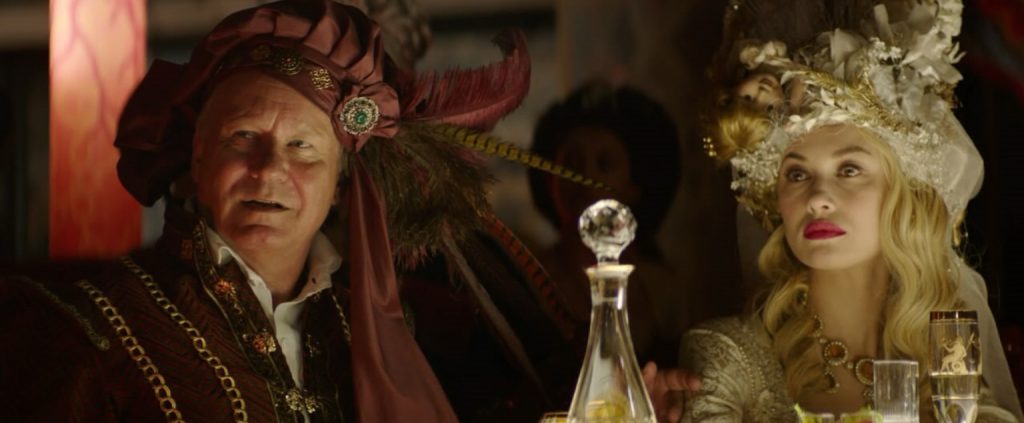
Gilliam himself must have been haunted by dreams and delusions over the twenty or so years from the film’s conception to completion, and so perhaps he is the real Don Quixote, an old fool whose visions are so strong and fill him with such vitality that the people around him refuse or are unable to take them from him, and indeed are themselves drawn into their power. The Man Who Killed Don Quixote is almost undoubtedly Gilliam’s most personal expression as an artist and should be viewed for that reason alone.
As with much of Gilliam’s work, the plot isn’t exactly propulsive. Frankly not much happens. Quixote and Toby wander around the lovely Spanish landscape bantering. As in the source novel, Quixote is in search of his love, the Lady Dulcinea, and wants to bring back the age of chivalry. There are a few fun interludes including battles with windmills. And that’s about it until we get to the gloriously colourful climax. But this isn’t such a significant shortcoming. The Man Who Killed Don Quixote is less about structured storytelling and more about the tension between dreams and reality as Toby loses his grip on what’s real and begins to see the world through Quixote’s eyes. As such, fans of Gilliam will be in familiar territory. One cannot help but think of Baron Munchausen, that teller of tall tales, or Robin Williams’ deluded beggar-knight from The Fisher King. In short no, the plot may not be up to much, but there is plenty of entertainment to be had.
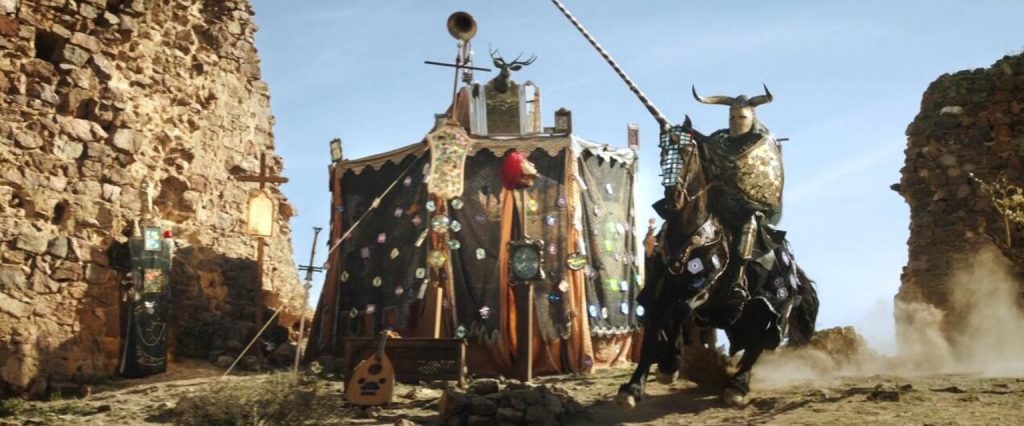
The film also lacks some of the visual splendour of Gilliam’s best work. This may be due to a restricted budget. There are however some lovely moments including Quixote’s battle with a horned knight, the shimmering decals that cover a nearby horse casting spots of light across the landscape as if from a giant mirror-ball. Gilliam hasn’t lost his eye for combining fantasy and self-indulgent beauty, even if he doesn’t have the resources of his glory days to realise his wildest visions.
It must be said that the film is more than a tad underwritten. None of the characters, with the exception of the larger than life Quixote, ever rise above cliché. However, Adam Driver, with his usual understated charm, manages to imbue Toby, the creatively blocked, emotionally stunted filmmaker, with far more nuance and likeability than the character really deserves. Indeed, with his near-deadpan delivery, Driver makes Toby into a perfect foil for the exuberant Don Quixote as played by Jonathon Pryce. As for Pryce, he is an absolute delight in the title role, and gives the film all of its levity. Several illustrious actors have been attached to play Quixote during the film’s long production history – John Hurt and Robert Duvall among them – yet it’s hard to imagine anyone carrying the part off with more frolicking, preening, foolish magnificence than Pryce. The two leading actors are a perfect double-act.
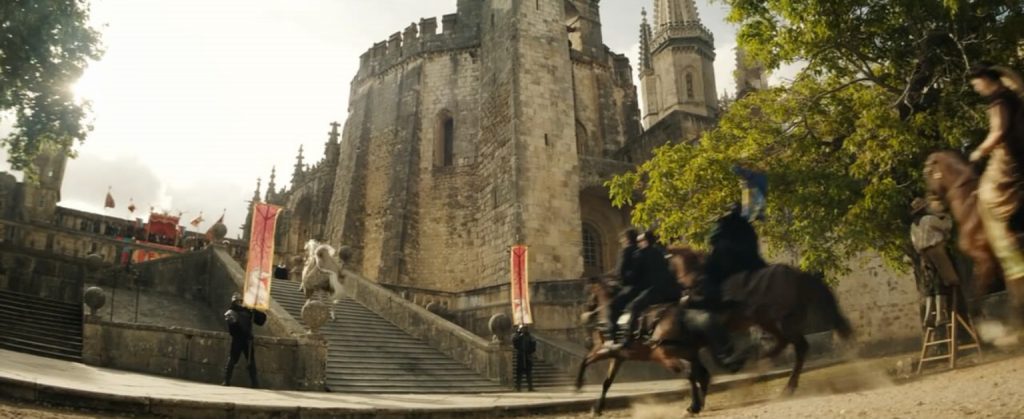
The Man Who Killed Don Quixote isn’t the masterpiece it needed to be to justify the long wait. Nonetheless, the film is a fascinating commentary on the power of dreams, by a filmmaker who has doggedly held onto his own. It is perfectly of a piece with the rest of Gilliam’s work and would provide a fitting coda if it turns out to be his last film, entirely possible as Gilliam is now 79. Here’s an idea – let’s forget about the wait and just enjoy The Man Who Killed Don Quixote.
Film ’89 Verdict – 7/10
The Man Who Killed Don Quixote has been on limited release in the UK since January 31st.
